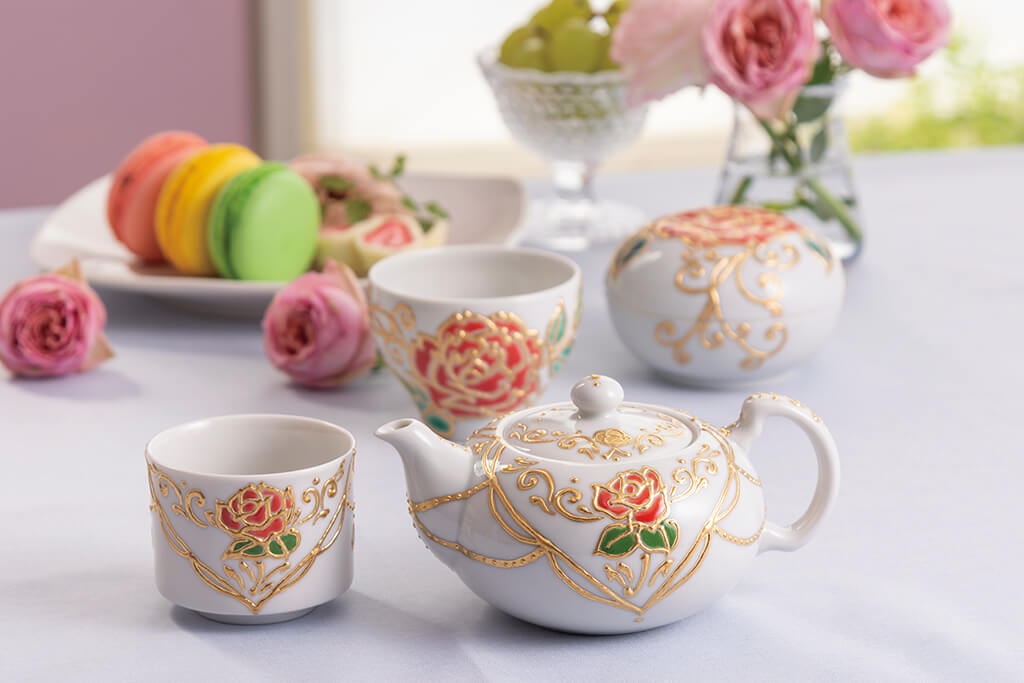Applying transfer paper to a vessel requires a great deal of skill. It cannot simply be stuck on and finished like a sticker. The transfer paper is very delicate, so the craftsman must use just the right amount of force to remove the air between the container and the transfer paper while applying it. If the wrong amount of force is used, the transfer paper may tear, and if the air is not removed properly, wrinkles may form.
The spatula must be used skillfully so as not to damage the image, and so as not to cause the image to sag, but to hold it firmly in place. Exquisite strength is required. If the paper is not adhered in line with the shape of the vessel, the center may be off when viewed as a plate, or for a cup-shaped vessel, the overlap between the beginning and end of the transfer paper may not be aligned, causing the image to collapse. It requires a high level of skill to apply the transfer paper properly.

